Catholic Virtues
 |
 |
 |
 |
 |
 |
 |
True & False Paths to Happiness - XXXVII
Man Must be Open to the Splendors
of the Transphere
In summary, the transphere is a transcendent vision of reality that results from the contemplation of the possibles of God, based on the created universe or the works of men.
This contemplation produces in the soul that dedicates itself to it an élan of union with the absolute of God.
 In this definition, the works of men should be understood not only as the edifices and monuments they construct, but also their actions, gestures, attitudes, heroic acts, etc.
Thus, the transphere in a way encompasses all the ways of sacral contemplation that we have analyzed up to now:
In this definition, the works of men should be understood not only as the edifices and monuments they construct, but also their actions, gestures, attitudes, heroic acts, etc.
Thus, the transphere in a way encompasses all the ways of sacral contemplation that we have analyzed up to now:
Things that resonate in the transphere
But just as the transphere influences the behavior of men on this Earth, so also do some earthly actions – both positive and negative – have repercussions in the transphere. Why is this? Because, however small the act might be, it moved History in some way.
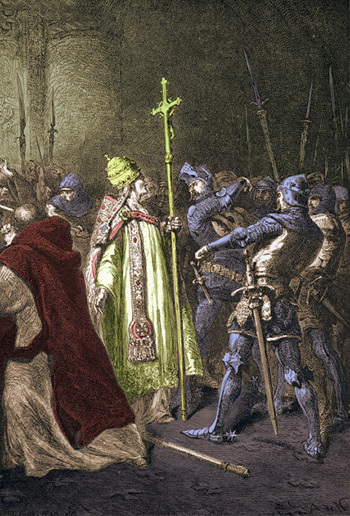 Something can resonate in the transphere because of its goodness or magnificence; on the other hand, something can resonate in it because of its perversity.
Something can resonate in the transphere because of its goodness or magnificence; on the other hand, something can resonate in it because of its perversity.
Examples abound. One good example of the latter is the slap of Anagni. The symbolic slap of Anagni that changed History took place on September 7, 1303. The victim was Pope Boniface VIII. The aggressors were Guillaume de Nogaret and Sciarra Colonna, who acted at the behest of Philip IV the Fair, the King of France, the eldest daughter of the Church.
Philip the Fair, unwilling to tolerate that anyone be above himself, rebelled against the Pope. He sent his two representatives to Anagni with a large band of mercenaries to besiege his palace and to imprison the Pope. Colonna was the first to enter the papal hall and gave the famous slap to the Pope of Rome. The Pope then was imprisoned and later released by the people of Anagni, who expelled the invaders.
This revolt of the King of France against the Pope was symbolic of the revolt of the temporal order in its highest expression, which was the King, against the spiritual order in its highest expression, which was the Pope.
It was similar to Lucifer's sin.
St. Michael & his Quis ut Deus?
While speaking, my eyes fortuitously fell upon this statue of Saint Michael raising his sword aloft to deliver a blow against Satan. It is an excellent reproduction of the famous Archangel atop the Abbey on Mont Saint Michael in France.
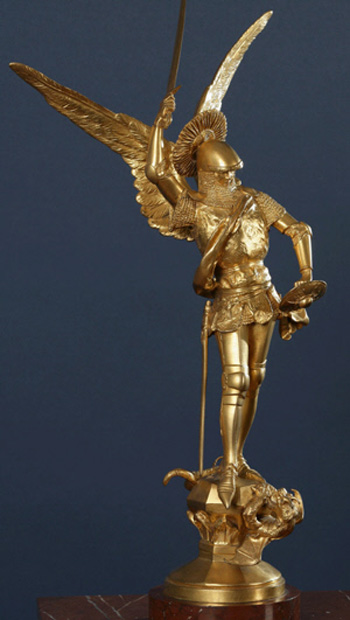 It is evident that his battle cry – Quis ut Deus? (Who is like unto God?) – eminently touched and resounded in the transphere. In this sense, it was admirably transpheric.
It is evident that his battle cry – Quis ut Deus? (Who is like unto God?) – eminently touched and resounded in the transphere. In this sense, it was admirably transpheric.
It is necessary to understand that behind the transphere are the Angels, just as behind the sub-sphere are the devils.
Revolutionary acts such as that of the anarchists who raised a black flag on the needle of Notre-Dame during the Sorbonne Revolution in 1968 in Paris reverberate in the transphere in the opposite sense of the good gestures. such bad actions also have an influence in the transphere.
It goes without saying that the Protestant Revolution, the French Revolution and the Communist Revolution had repercussions in the transphere. Other historical facts or events, laden with symbolic force, could also be mentioned due to their archetypal character.
Sacred Scripture presents us with many events that had repercussions in the transphere, such as the reprimand "Tibi non licet!" (It is not lawful for you!) spoken by St. John the Baptist to Herod. This touched the transphere in a direct way. Why? Because that prohibition was declared with such great love and force that it shook all of Jerusalem.
In my opinion, the ancient anchorites who prayed in the desert, or those early Benedictine monks who attracted men to build cities around their monasteries, had an intense action in the the transphere.
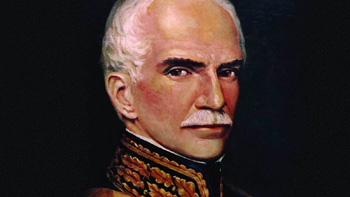 The martyrdom of Garcia Gabriel Moreno – the Catholic president of Ecuador who died shouting "Dios no muere" (God does not die!) – certainly had repercussions in the transphere, both because of his dignity as martyr and because of the fact that he was the Head of State. This office in itself added something transcendent to his martyrdom. Ecuador touched God through the act of a Head of State faithful to his mission.
The martyrdom of Garcia Gabriel Moreno – the Catholic president of Ecuador who died shouting "Dios no muere" (God does not die!) – certainly had repercussions in the transphere, both because of his dignity as martyr and because of the fact that he was the Head of State. This office in itself added something transcendent to his martyrdom. Ecuador touched God through the act of a Head of State faithful to his mission.
A Brazilian example of this action in the transphere would be the famous scene immortalized by Pedro Américo, in which Dom Pedro I is seen proclaiming the independence of Brazil. It certainly did not happen exactly as portrayed in the picture. But the artist captured something of the reality, and that reality still influences us today. It can be said, therefore, that the scene, and also Dom Pedro I as pictured by Pedro Américo, belong to that transcendent vision of reality that we call the transphere.
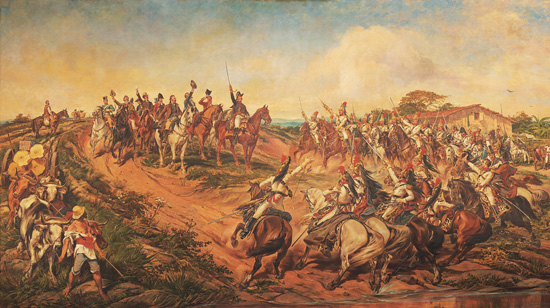
The transphere & the Mystical Body of Christ
Therefore, the eminent actions of men, as well as the smallest of acts of virtue, reverberate in the transphere. There is a theological explanation for this.
The transphere would be like an ethereal region floating above humanity, and in it would be all these actions. It would be like a satellite, where the signal goes up and down back to Earth.
This impression made in the imagination in fact corresponds to a theological truth in the following sense: Although this ethereal region does not exist, there is something in God, the Book of Life, (Phil 4:3) something that would be, so to speak, the memory of God or the knowledge that God has of the external fact, and because of that, reverberates in God; and thus it reverberates afterwards on Earth.
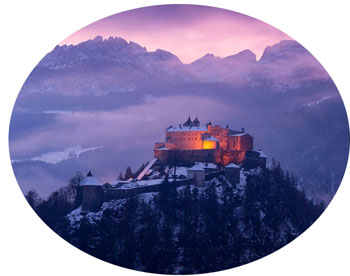 Thus, behind and above the idea of the transphere – to speak in a more precise theological language – there is an idea of the Mystical Body of Christ and the repercussions that occur in it, assuming that the Mystical Body of Christ forms a whole with Our Lord Jesus Christ and that it encompasses all of us.
Thus, behind and above the idea of the transphere – to speak in a more precise theological language – there is an idea of the Mystical Body of Christ and the repercussions that occur in it, assuming that the Mystical Body of Christ forms a whole with Our Lord Jesus Christ and that it encompasses all of us.
In this way, what happens in us somehow touches on the historical reality, which is the Mystical Body of Christ, the Communion of the Saints and God Our Lord. The transphere is not to be confused with the Mystical Body of Christ, but is a conception, a vue de l'esprit bathed in grace that is the best reflection of God for each one.
I do not believe there will be a full restoration of Christian Civilization until souls are fully open to the splendors of the transphere.
The end


A nuanced sunset can give a notion of the transphere
- The considerations made on the virtue of admiration (here and here);
- The ambiences, customs and civilizations (here and here);
- The sense of symbolism (here and here);
- The search for the absolute (here, here, here and here);
- The fourth way of St. Thomas and the theory of participation (here);
- The essential role of archetypes (here and here);
- Transparency and transcendence (here, here and here);
- The sublimity of the mystery (here and here) and
- The universe of the possibles (here and here).
Things that resonate in the transphere
But just as the transphere influences the behavior of men on this Earth, so also do some earthly actions – both positive and negative – have repercussions in the transphere. Why is this? Because, however small the act might be, it moved History in some way.

The slap of Anagni signaled
the end of the Middle Ages
Examples abound. One good example of the latter is the slap of Anagni. The symbolic slap of Anagni that changed History took place on September 7, 1303. The victim was Pope Boniface VIII. The aggressors were Guillaume de Nogaret and Sciarra Colonna, who acted at the behest of Philip IV the Fair, the King of France, the eldest daughter of the Church.
Philip the Fair, unwilling to tolerate that anyone be above himself, rebelled against the Pope. He sent his two representatives to Anagni with a large band of mercenaries to besiege his palace and to imprison the Pope. Colonna was the first to enter the papal hall and gave the famous slap to the Pope of Rome. The Pope then was imprisoned and later released by the people of Anagni, who expelled the invaders.
This revolt of the King of France against the Pope was symbolic of the revolt of the temporal order in its highest expression, which was the King, against the spiritual order in its highest expression, which was the Pope.
It was similar to Lucifer's sin.
St. Michael & his Quis ut Deus?
While speaking, my eyes fortuitously fell upon this statue of Saint Michael raising his sword aloft to deliver a blow against Satan. It is an excellent reproduction of the famous Archangel atop the Abbey on Mont Saint Michael in France.

St. Michael the Archangel
It is necessary to understand that behind the transphere are the Angels, just as behind the sub-sphere are the devils.
Revolutionary acts such as that of the anarchists who raised a black flag on the needle of Notre-Dame during the Sorbonne Revolution in 1968 in Paris reverberate in the transphere in the opposite sense of the good gestures. such bad actions also have an influence in the transphere.
It goes without saying that the Protestant Revolution, the French Revolution and the Communist Revolution had repercussions in the transphere. Other historical facts or events, laden with symbolic force, could also be mentioned due to their archetypal character.
Sacred Scripture presents us with many events that had repercussions in the transphere, such as the reprimand "Tibi non licet!" (It is not lawful for you!) spoken by St. John the Baptist to Herod. This touched the transphere in a direct way. Why? Because that prohibition was declared with such great love and force that it shook all of Jerusalem.
In my opinion, the ancient anchorites who prayed in the desert, or those early Benedictine monks who attracted men to build cities around their monasteries, had an intense action in the the transphere.

Gabriel Garcia Moreno, President of Ecuador
A Brazilian example of this action in the transphere would be the famous scene immortalized by Pedro Américo, in which Dom Pedro I is seen proclaiming the independence of Brazil. It certainly did not happen exactly as portrayed in the picture. But the artist captured something of the reality, and that reality still influences us today. It can be said, therefore, that the scene, and also Dom Pedro I as pictured by Pedro Américo, belong to that transcendent vision of reality that we call the transphere.

Dom Pedro I declares the Independence of Brazil
The transphere & the Mystical Body of Christ
Therefore, the eminent actions of men, as well as the smallest of acts of virtue, reverberate in the transphere. There is a theological explanation for this.
The transphere would be like an ethereal region floating above humanity, and in it would be all these actions. It would be like a satellite, where the signal goes up and down back to Earth.
This impression made in the imagination in fact corresponds to a theological truth in the following sense: Although this ethereal region does not exist, there is something in God, the Book of Life, (Phil 4:3) something that would be, so to speak, the memory of God or the knowledge that God has of the external fact, and because of that, reverberates in God; and thus it reverberates afterwards on Earth.

Something transpheric is in this castle
sitting between Heaven & Earth
In this way, what happens in us somehow touches on the historical reality, which is the Mystical Body of Christ, the Communion of the Saints and God Our Lord. The transphere is not to be confused with the Mystical Body of Christ, but is a conception, a vue de l'esprit bathed in grace that is the best reflection of God for each one.
I do not believe there will be a full restoration of Christian Civilization until souls are fully open to the splendors of the transphere.
The end

Posted January 26, 2022
______________________
______________________
 |
 |
 |


